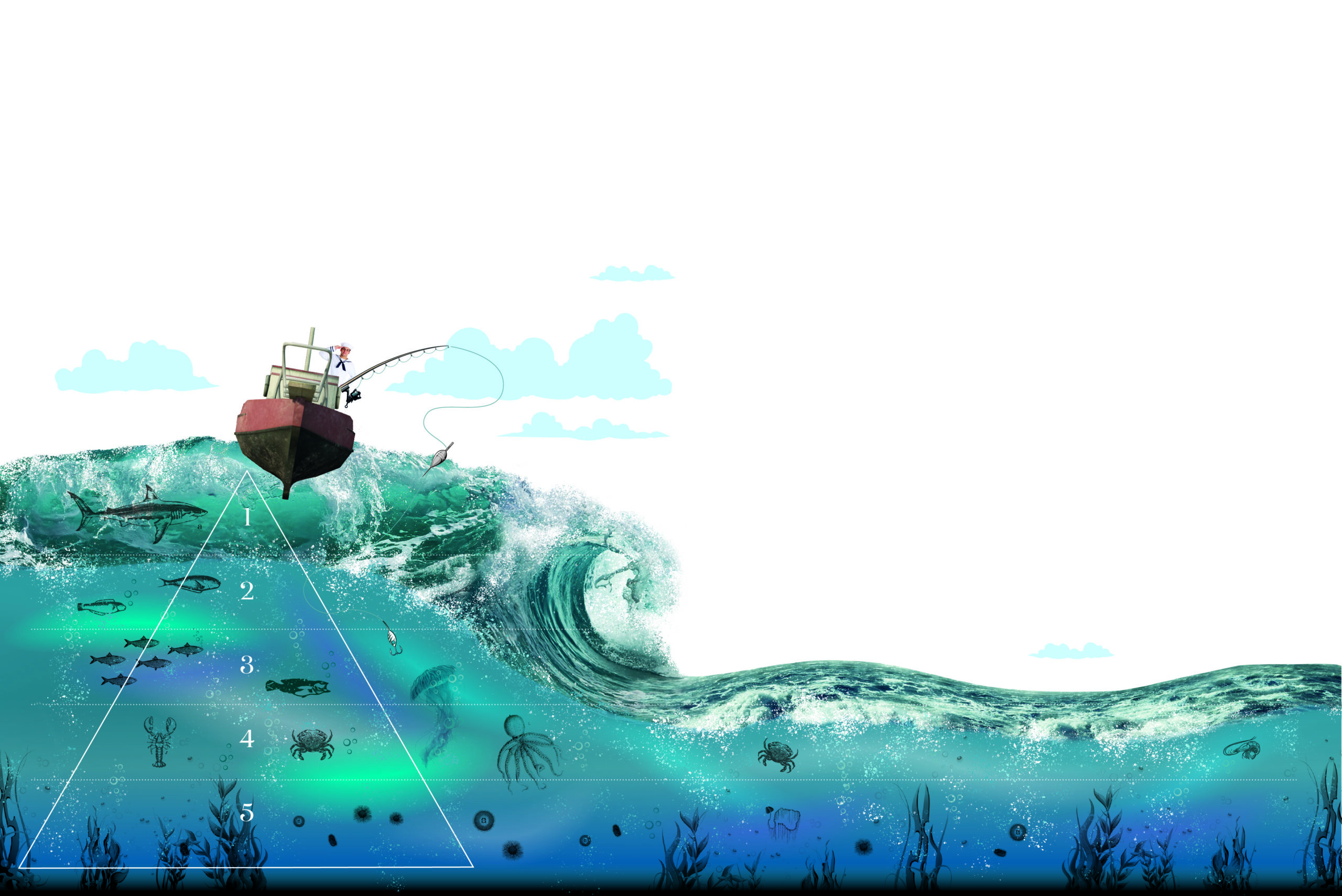Text: Nienke Beintema
Feeding the world population is an ever-greater challenge. Organizations including the FAO, the UN and the European Commission have suggested one solution might be to use the sea more. The oceans account for 70 per cent of the Earth’s surface but only supply one to two per cent of our food. That could be improved, say proponents of ‘Blue Growth’, for example by expanding ‘mariculture’ — cultivating food at sea.
‘But unfortunately it isn’t that simple,’ says Jaap van der Meer of Wageningen Marine Research. He wrote a paper that was published in the journal Nature Food in December and has attracted considerable attention.‘There has been a lot of talk over the past 10 years about the opportunities with Blue Growth. But I started to wonder if it was really possible. It turned out nobody had done the maths.’
Few nutrients
In terms of fertility, you can compare most of the ocean with a desert. On the other hand, the conversion of plant matter into animal biomass is much more efficient at sea than on land. On land, only 0.1 per cent of the energy in plants ends up in herbivores. ‘Most of the biomass in a forest is in the trees,’ explains Van der Meer, ‘and they end up rotting on the forest floor. They mainly provide food for fungi and bacteria, which barely filter further up the food pyramid.’ Most of the plant biomass in the sea consists of algae. About six per cent of that is converted into herbivore biomass. That isn’t much, but it is 60 times more than on land.
In terms of fertility, you can compare the ocean with a desert
‘The problem with the production at sea,’ says Van der Meer, ‘is that the first two levels of the food pyramid — the plants and herbivores — mainly consist of single-celled algae and plankton less than half a millimetre in size. We can’t harvest them efficiently.’ That is why at sea we have to rely on the higher trophic levels, fish in particular. Taken as a whole, they only account for a very small proportion of the energy production in the oceans, as 94 per cent of the energy is lost in each step of the marine food chain.
Eating seaweed
Can’t we eat seaweed? ‘Seaweed is mainly found in a narrow zone along the coast as it needs to attach itself to the seabed,’ says Van der Meer. You could grow seaweed in the open seas, for example using floating structures. ‘But that is expensive and technically challenging. What is more, large seaweeds are difficult to harvest and they soon rot if you don’t dry them properly immediately. That uses a lot of energy and makes this product unsuitable as a staple food.’
According to the theoretical biologist, coastal seas such as the North Sea can only feed a limited number of people. ‘Nutrients are a limiting factor there too. Yields are very low, certainly in comparison with a product such as sugar beet.’ Fertilization is not an option, in part because that changes the composition of the algae, often increasing the proportion of inedible species. Secondly, many fertilizer components such as phosphorus are scarce resources and they then soon end up in the seabed.
Seaweed extracts make crops better able to cope with salt stress
Another option is to grow predatory fish such as salmon in cages. But the salmon eat pellets that contain fishmeal and fish oil — from the sea. So that too is not a solution to the problem of how to feed the world, says Van der Meer.
What about if you give the salmon in fish farms food that comes from the land, such as soya? ‘That switch has indeed been made but you are back to a land-based system. So you are using resources that are already in short supply on land and have their own associated problems. You could just as easily give the soya to chickens. That yields just as much.’
In terms of mariculture, Van der Meer sees shellfish cultivation as the most promising option. Shellfish are low down the food chain and they are high-grade food. But there is limited space in coastal zones and the costs and technology become a limiting factor further from the shore.
Sequestering carbon
But the Blue Growth idea does not have to be ditched completely, as projects at Wageningen Marine Research have shown. Marnix Poelman and colleagues have been investigating how marine production might be possible in certain places. ‘These projects are not just about food supplies,’ says Poelman, ‘but also about sequestering carbon and recycling nutrients. Denmark is already doing this on a small scale.’
And marine production can also help agriculture on land. Seaweed extracts make crops better able to cope with salt stress. And the addition of shellfish to fish feed improves the health of farmed fish. ‘There are definitely some good options,’ concludes Poelman, ‘but we need to be focused and careful in what we do.’
Van der Meer agrees. ‘I’m not saying nothing can be done, but we do need to assess the possibilities critically. Blue Growth has been hyped in recent years and I’m trying to put it into perspective.’

 Illustratie: Kay Coenen
Illustratie: Kay Coenen